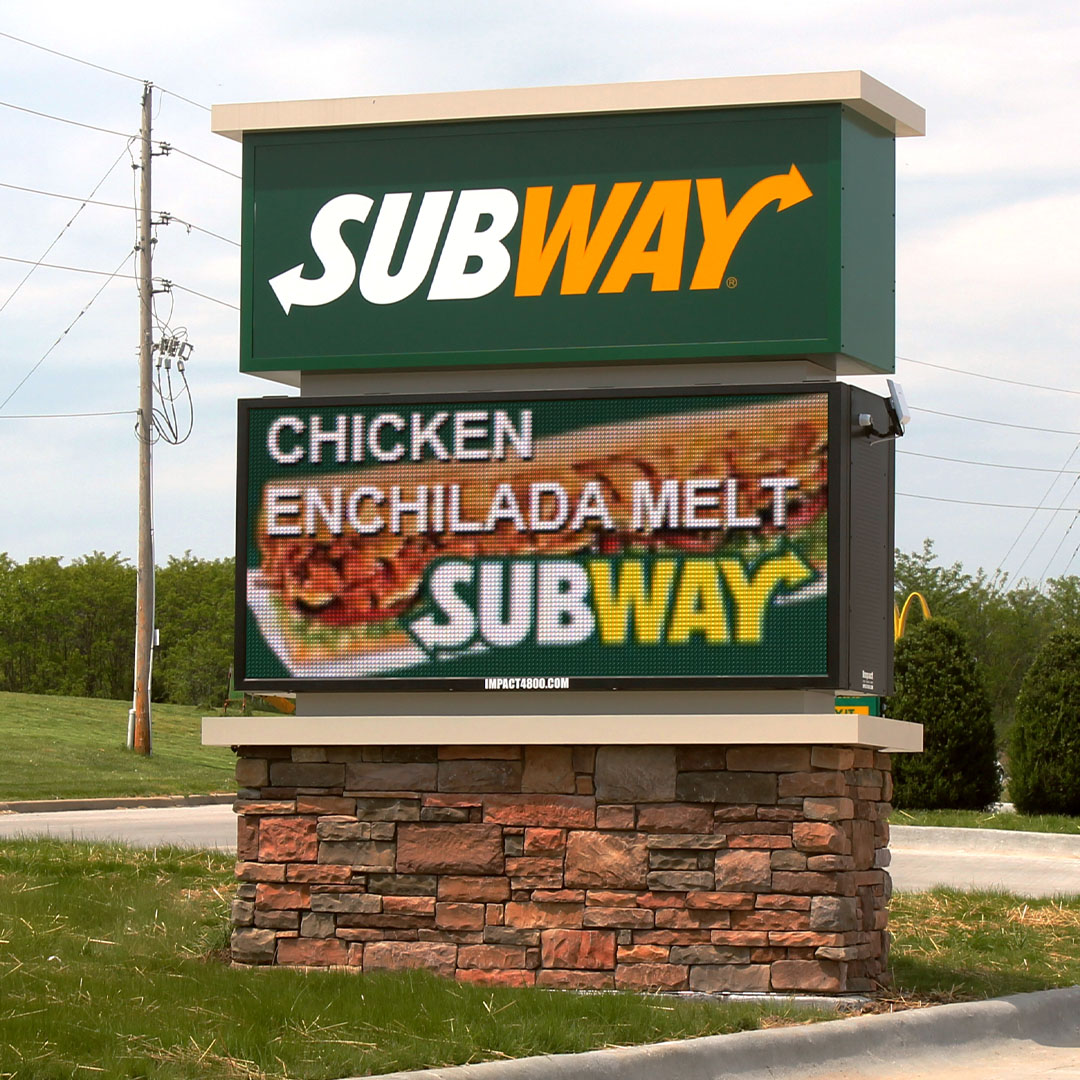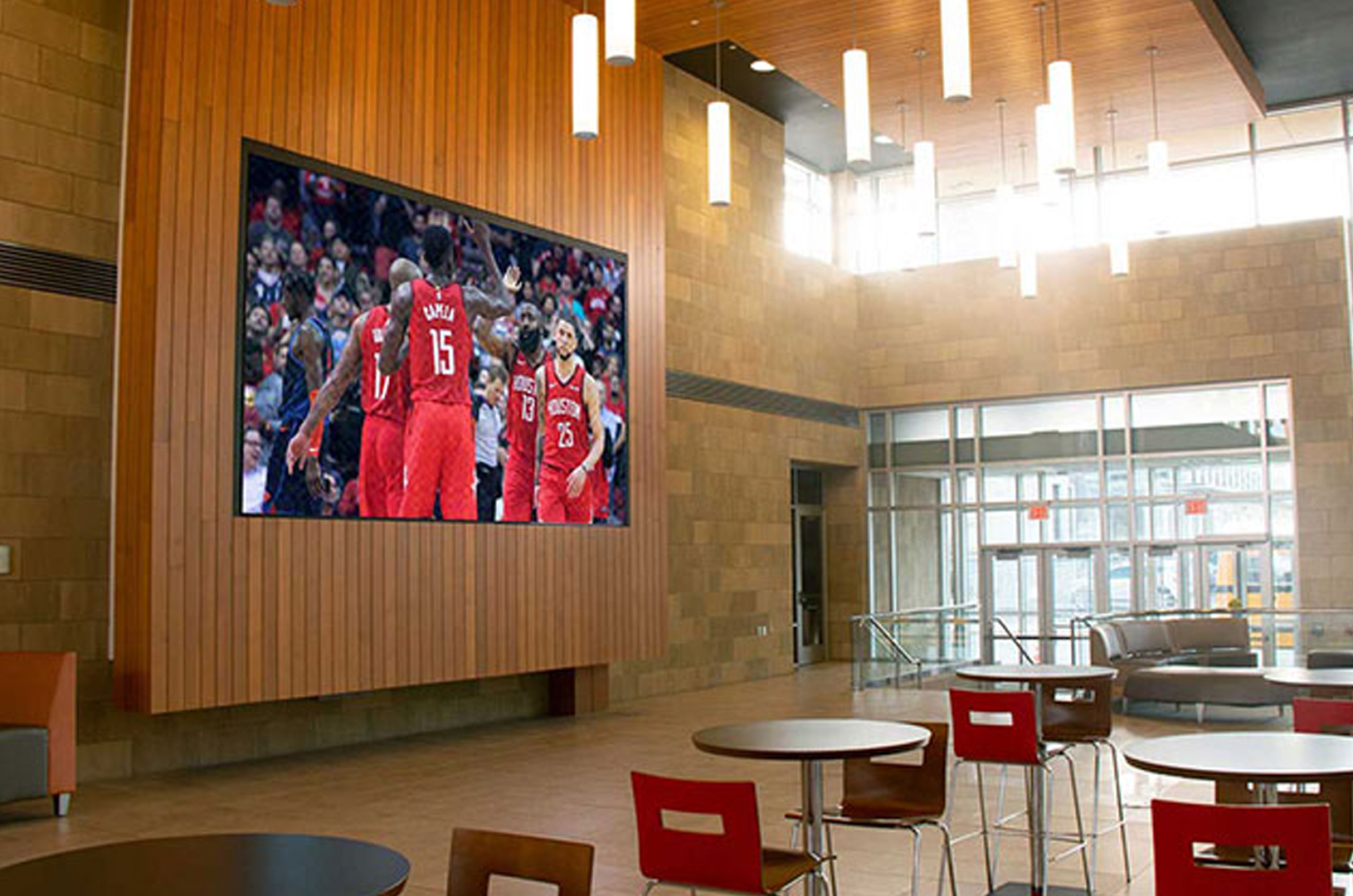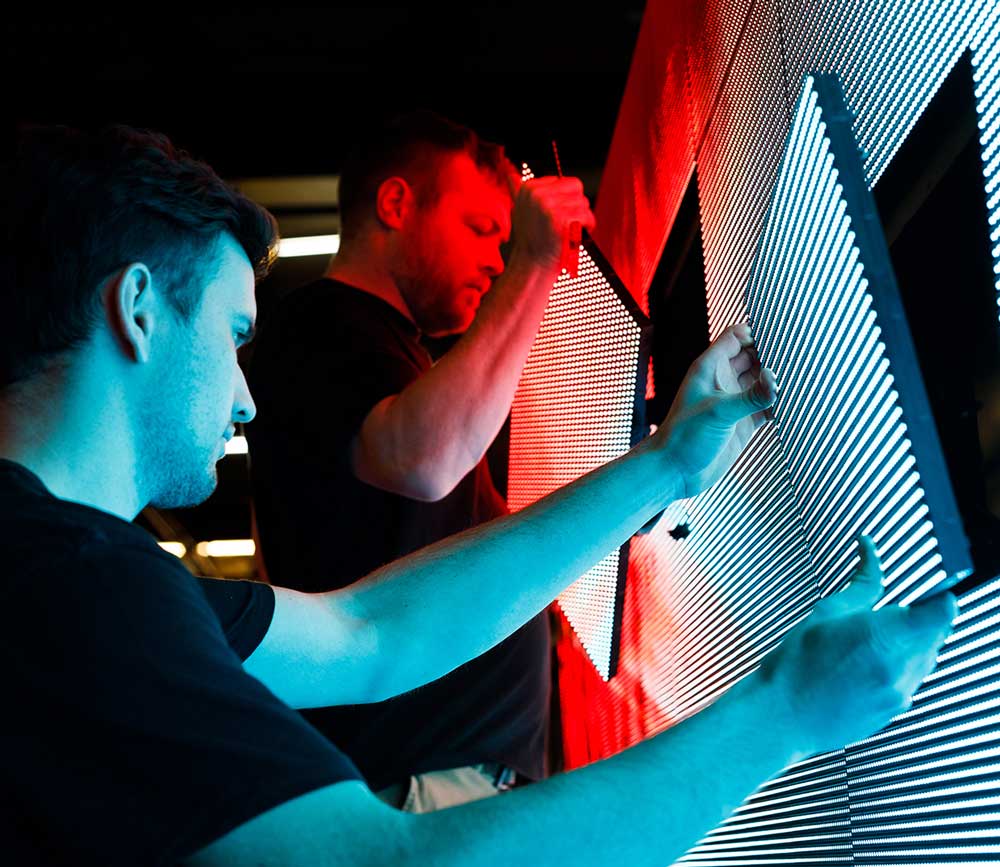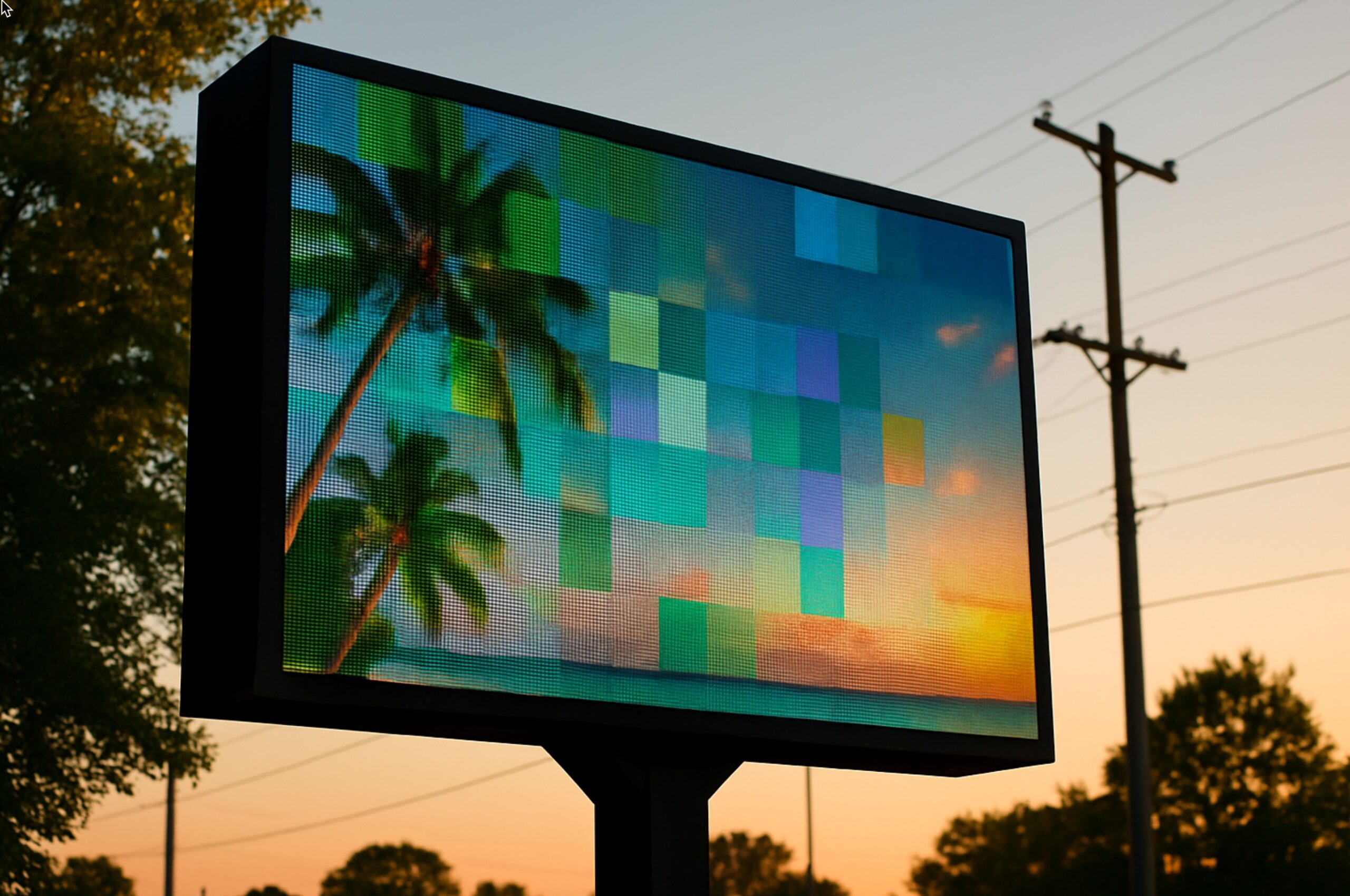LED displays only work when people can clearly see and absorb their messages. Whether outdoors in bright daylight or indoors at an event, visibility is the single factor that determines impact. Brightness, pixel pitch, and scheduling all influence how effectively an LED display communicates. Getting these elements right ensures your investment produces real results.


How bright should an LED display be for outdoor viewing?
Brightness is measured in NITs, or candelas per square meter. Outdoor LED signs need to overcome direct sunlight to remain visible. Industry standards recommend 5,000–7,000 nits for outdoor displays, while 1,200 to 4,000 NITs is usually sufficient indoors. Automatic brightness controls are also valuable, adjusting output based on ambient light conditions. Displays that are too dim disappear in daylight, while signs that are overly bright at night can cause glare or eye fatigue.
How does pixel pitch relate to the optimal viewing distance for an LED display?
Pixel pitch describes the distance between the centers of two adjacent pixels. The smaller the pitch, the higher the resolution. A simple calculation helps:
Viewing distance ≈ Pixel pitch (in mm) × 8–10 feet.
For example, a 10mm pixel pitch is best viewed from 80–100 feet away. Outdoor signs, seen from a distance, often use larger pixel pitches (10mm–16mm), while indoor video walls use tighter pitches (1.5mm–4mm) for crisp visuals at closer ranges. Choosing the right pixel pitch ensures clarity without unnecessary cost.
What is the recommended pixel pitch for an indoor LED screen?
Indoor LED displays benefit from tighter pixel pitches because viewers stand closer. 2.5mm–3.9mm pitches are common in retail, hospitality, and corporate settings, allowing for sharp, high-resolution imagery. For immersive video walls or boardrooms, 1.2mm–1.9mm pitches deliver exceptional detail. Selecting the right pixel pitch balances budget with visual performance.
What are the best practices for scheduling content to maximize LED display impact?
Even the brightest display with perfect resolution loses effectiveness if the content isn’t timed well. Scheduling best practices include:
Match timing to audience flow. Highlight promotions during rush hours, school traffic, or evening commutes.
Rotate messages every 6–8 seconds. Viewers only have a moment to absorb your content.
Prioritize high-contrast visuals. Use bold fonts, bright colors, and simple graphics that can be understood quickly.
Daypart scheduling. Display coffee ads in the morning, dinner specials in the evening, or seasonal messages at appropriate times.
Effective scheduling ensures the right message hits the right audience at the right moment.
How can I prevent glare from reducing the visibility of my LED display?
Glare is one of the most common visibility problems. It can be minimized by:
Positioning the display away from direct sunlight angles.
Using displays with anti-glare coatings or louvers.
Employing brightness sensors to automatically adjust levels.
Choosing solid-state engineered signs that maintain uniform brightness.
These measures keep content legible in all conditions.
Maximizing visibility requires the right balance of brightness, pixel pitch, and scheduling. When all three factors align, your LED display delivers stronger impressions, more engagement, and higher ROI. NEXT LED Signs builds displays engineered for clarity and reliability in every environment. Contact us today to start your project.
How Next LED Signs Can Help
Visibility isn’t guesswork—it’s engineering and timing. NEXT LED Signs designs LED displays for clear, reliable viewing in every condition. We right-size brightness, specify the correct pixel pitch, and program daypart schedules that match your traffic. Need an expert plan for your location? Request a site rendering and content schedule today. Let’s build a display that gets seen and remembered..
FAQs:
- Does going brighter always improve outdoor LED visibility?
Not necessarily. While outdoor LED displays typically need 5,000–8,000 nits (and sometimes over 10,000 nits in direct sunlight) pushing brightness too high has diminishing returns. It increases power consumption, generates heat, and can shorten LED lifespan. Efficiency — measured as nits-per-watt — is now a key performance metric in premium outdoor displays. - What viewing distance should you plan around for a given pixel pitch?
One commonly used rule is 1 mm pixel pitch ≈ 8 feet of optimal viewing distance. Another heuristic: multiply the pixel pitch in mm by 10 to get the recommended viewing distance in feet. For example:- A 2 mm pitch → ~20 ft
- A 10 mm pitch → ~100 ft
These are guidelines. For sharper control, use the “visual acuity distance” method (pixel pitch × 3438 → result in mm) to determine when viewers stop distinguishing individual pixels.
- How do I time or rotate LED content so it’s not ignored?
Studies in digital signage behavior suggest that message rotation intervals of 6–10 seconds tend to maximize attention before the viewer’s gaze shifts Also, dayparting content (e.g. breakfast promos in the morning, events in the evening) increases relevance. Pair that with sensors or data on foot-traffic peaks to align your highest-priority ads with the busiest times. - What pixel pitch works best for indoor LED applications like boardrooms or retail walls?
Indoor settings demand finer pitches because viewers are closer. The sweet spot is often 1.5 mm – 4 mm depending on room size and viewer distance. Displays with pitches below 2 mm are common for premium video walls in lobbies or control rooms. But pushing below what your audience can perceptually distinguish can be wasted cost. - What strategies help reduce glare or reflection on LED displays?
A few proven tactics:
Use anti-glare coatings or louvers to block oblique sunlight.
Position displays to avoid direct alignment with the sun’s path.
Deploy ambient light sensors to auto-adjust brightness and prevent wash-out.
Opt for higher contrast settings, which help text and shapes punch through reflection.
While I didn’t find a precise peer-reviewed stat on glare reduction percentage, many high-end LED systems incorporate these features as standard for outdoor viability.



